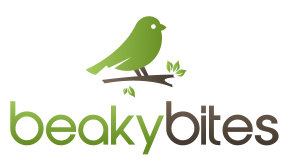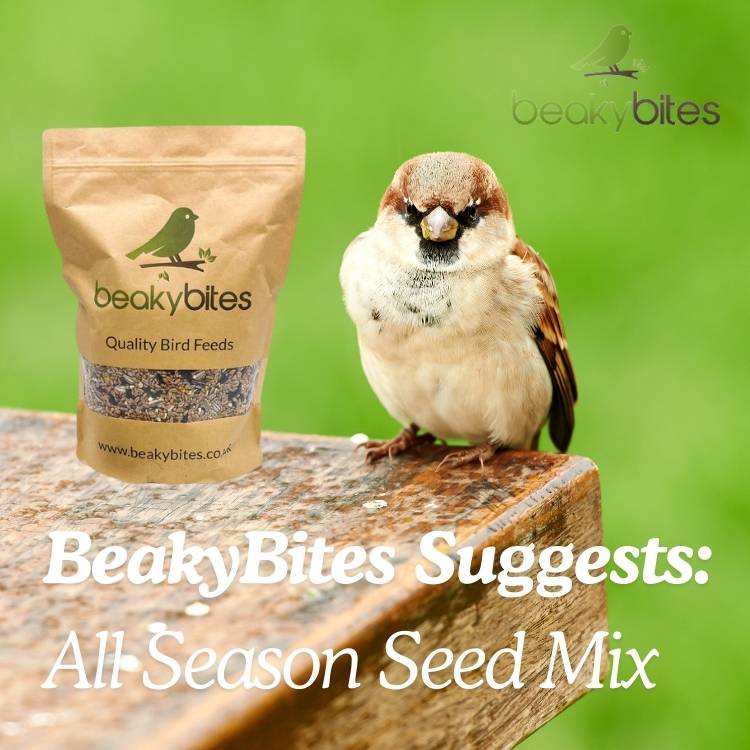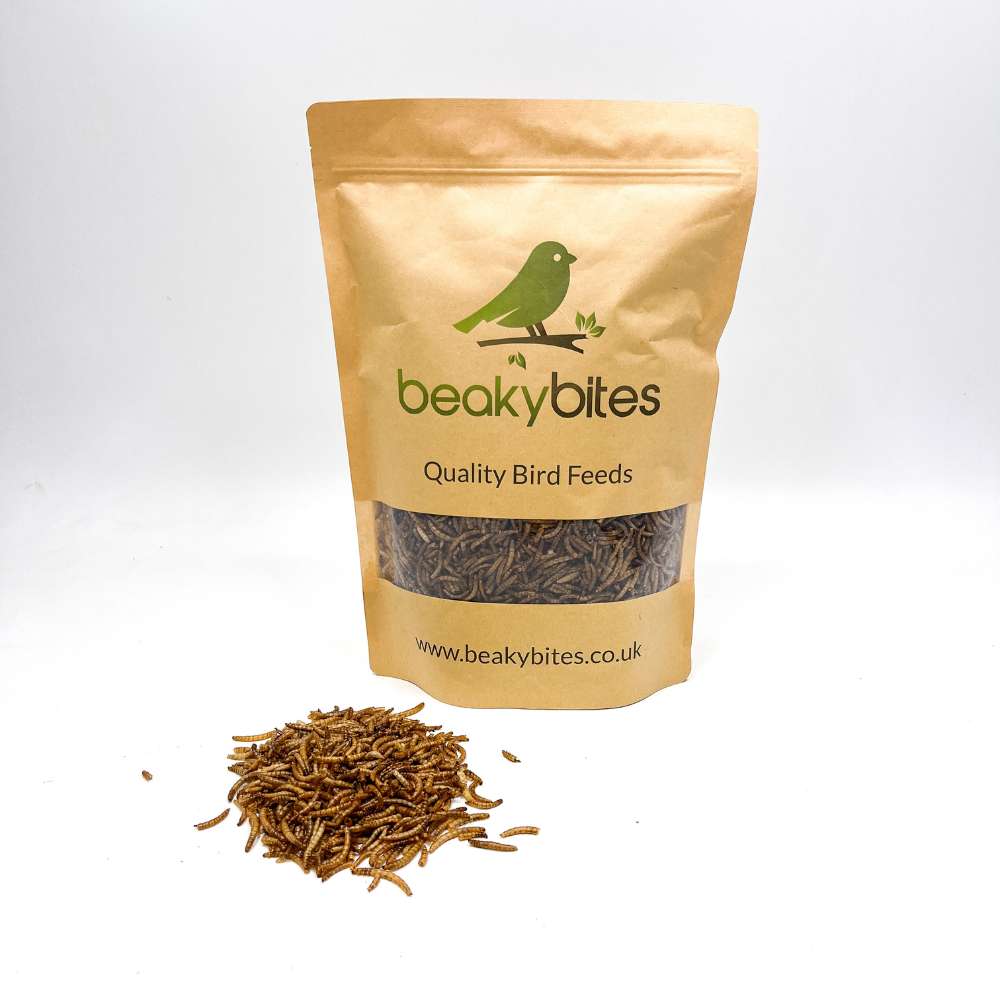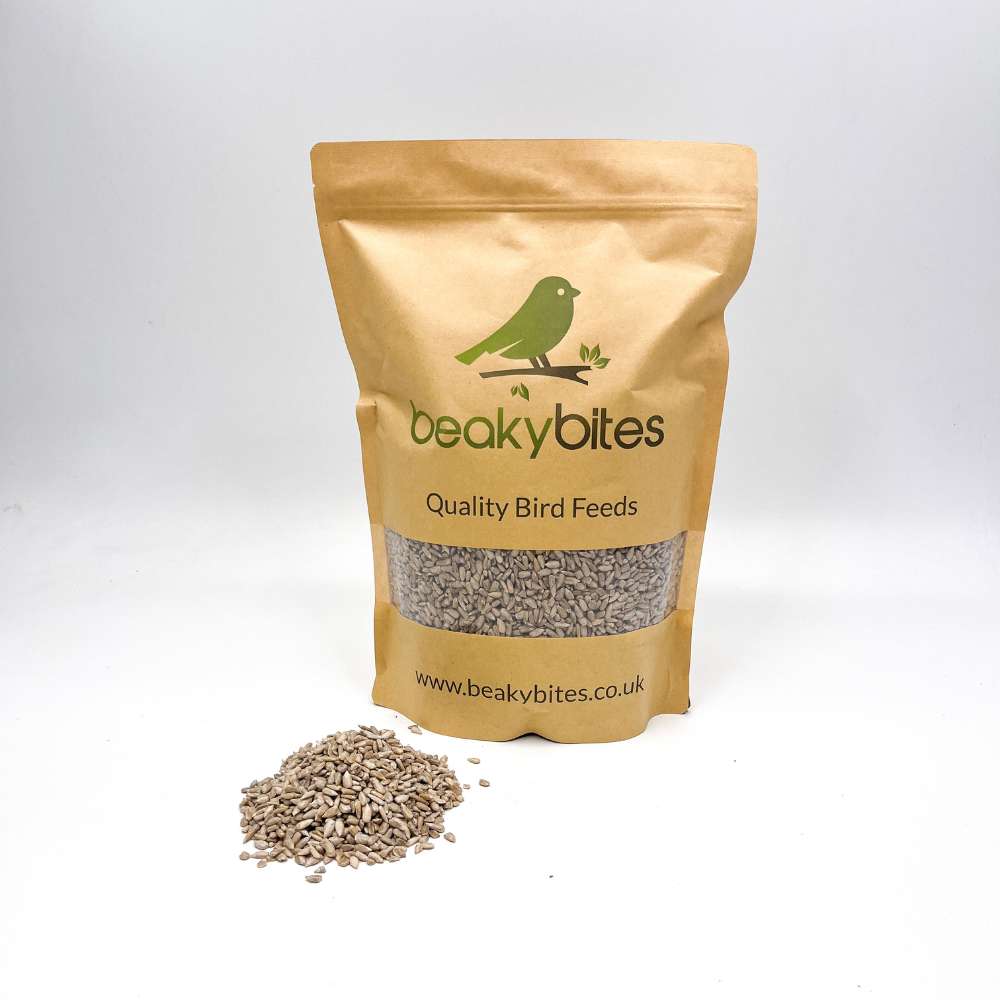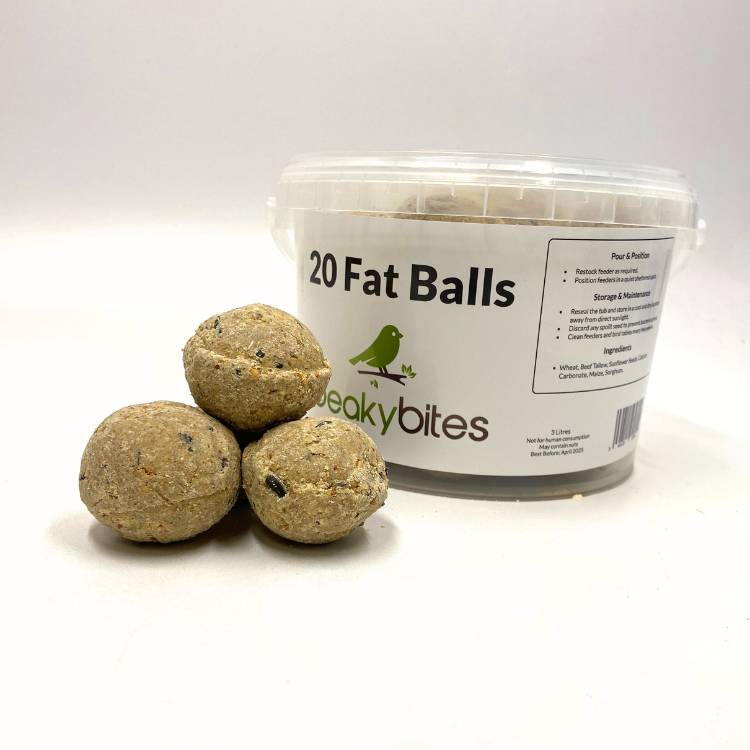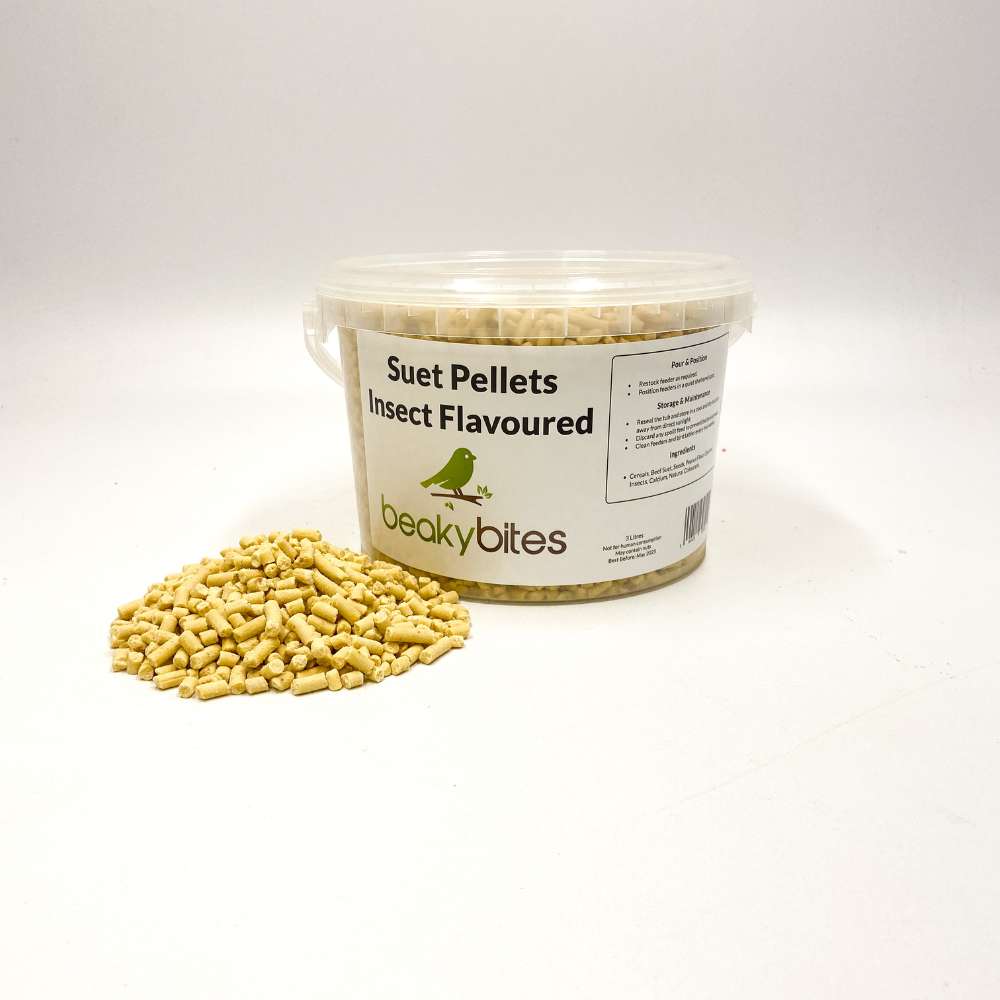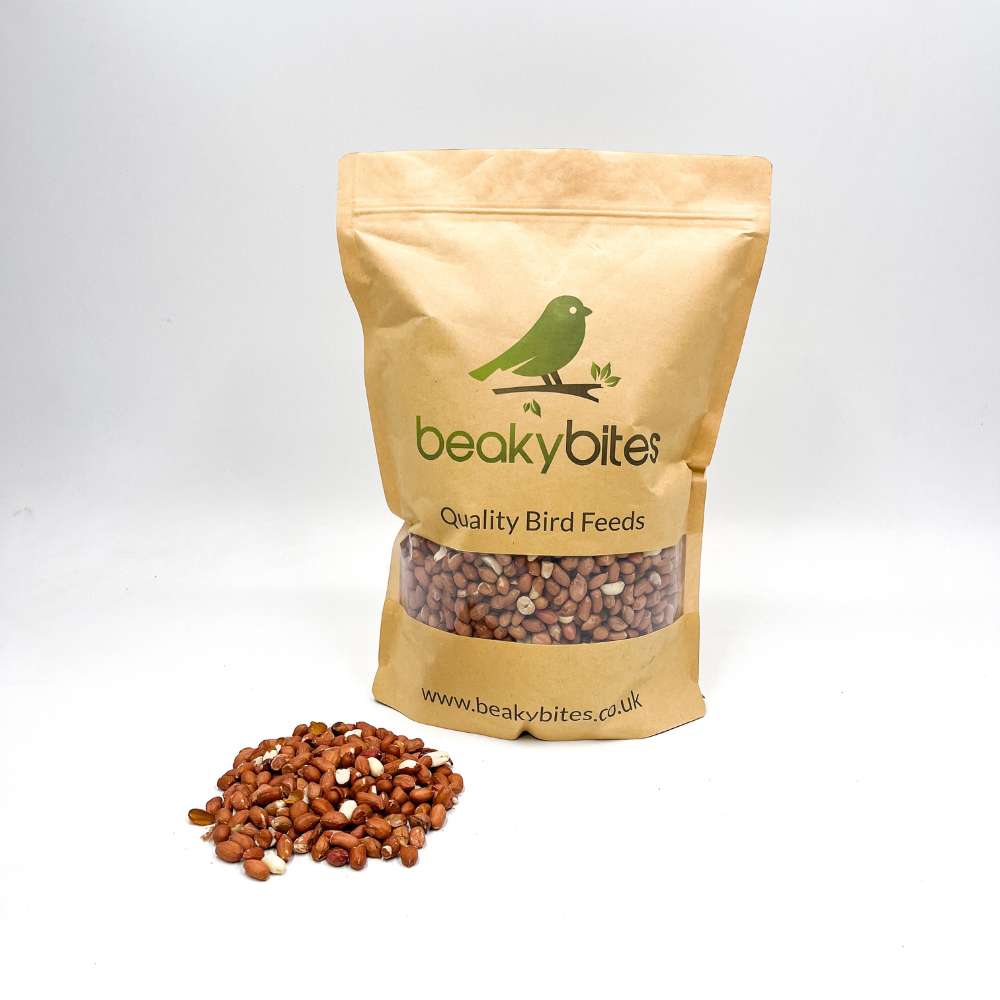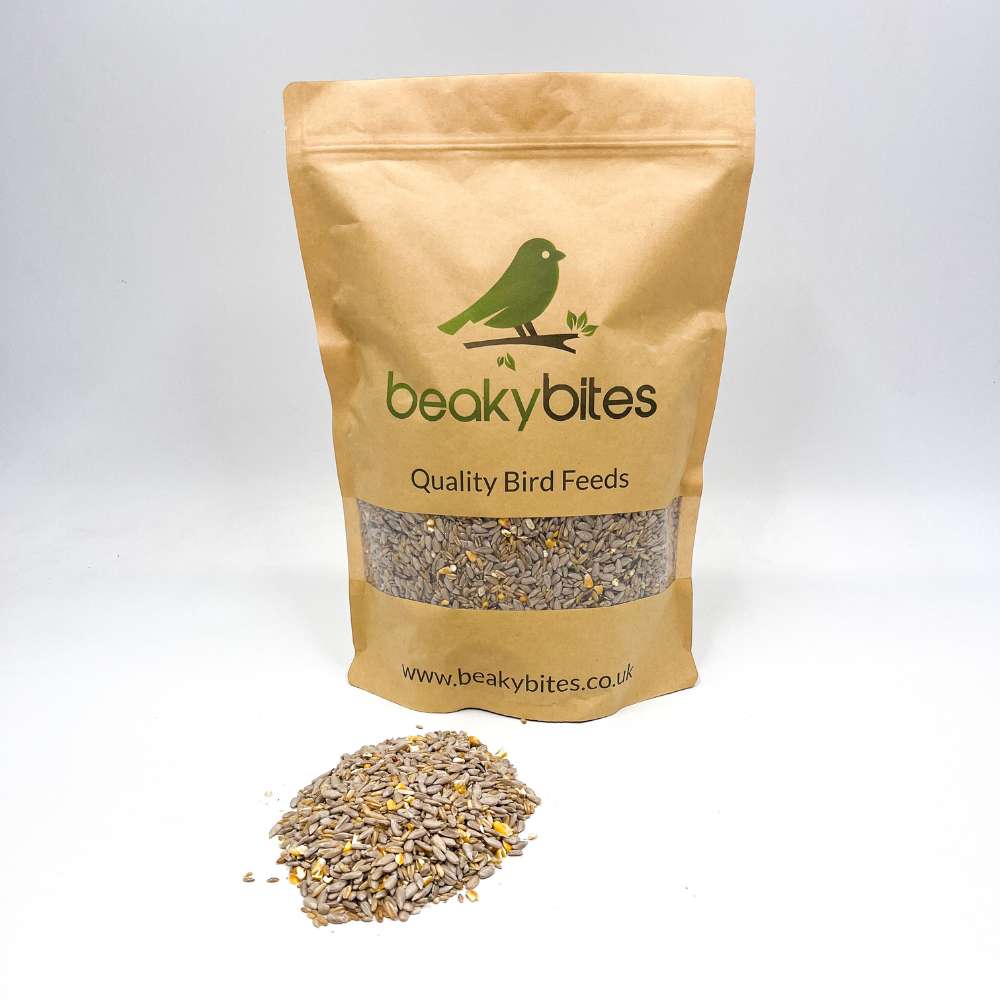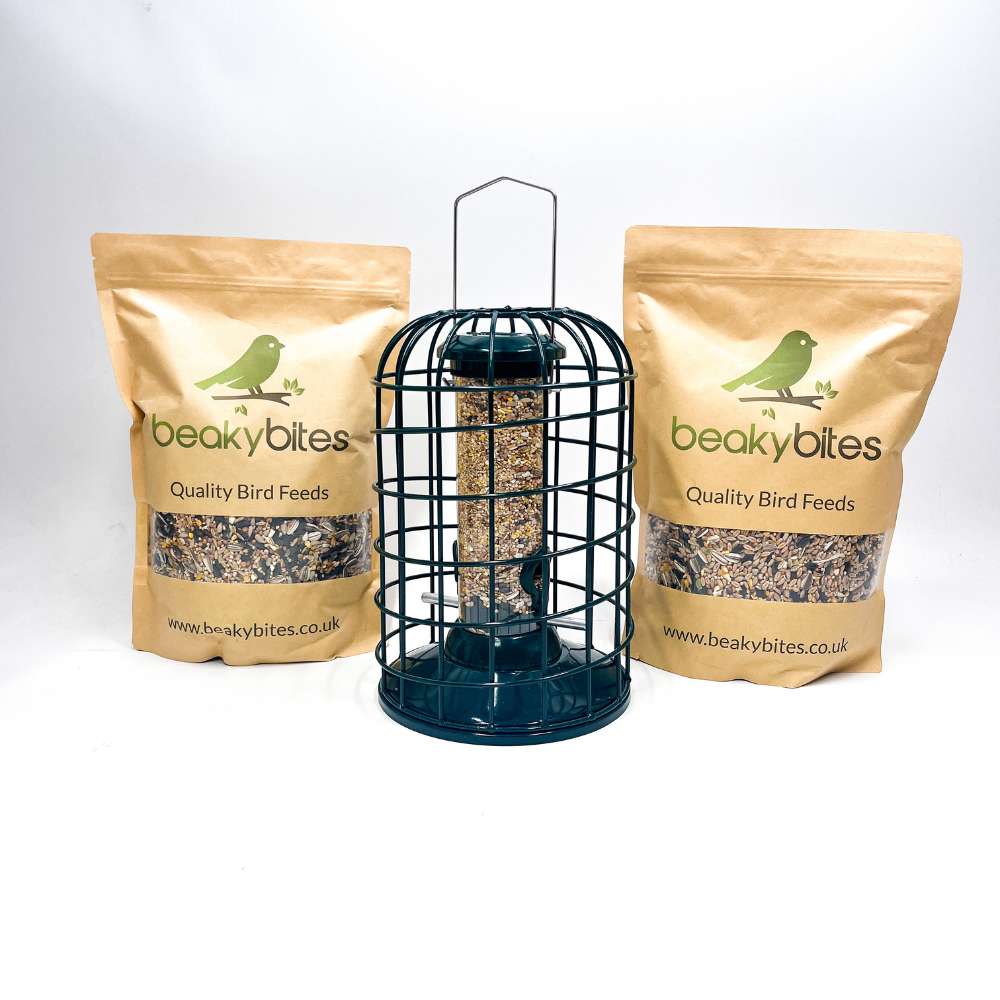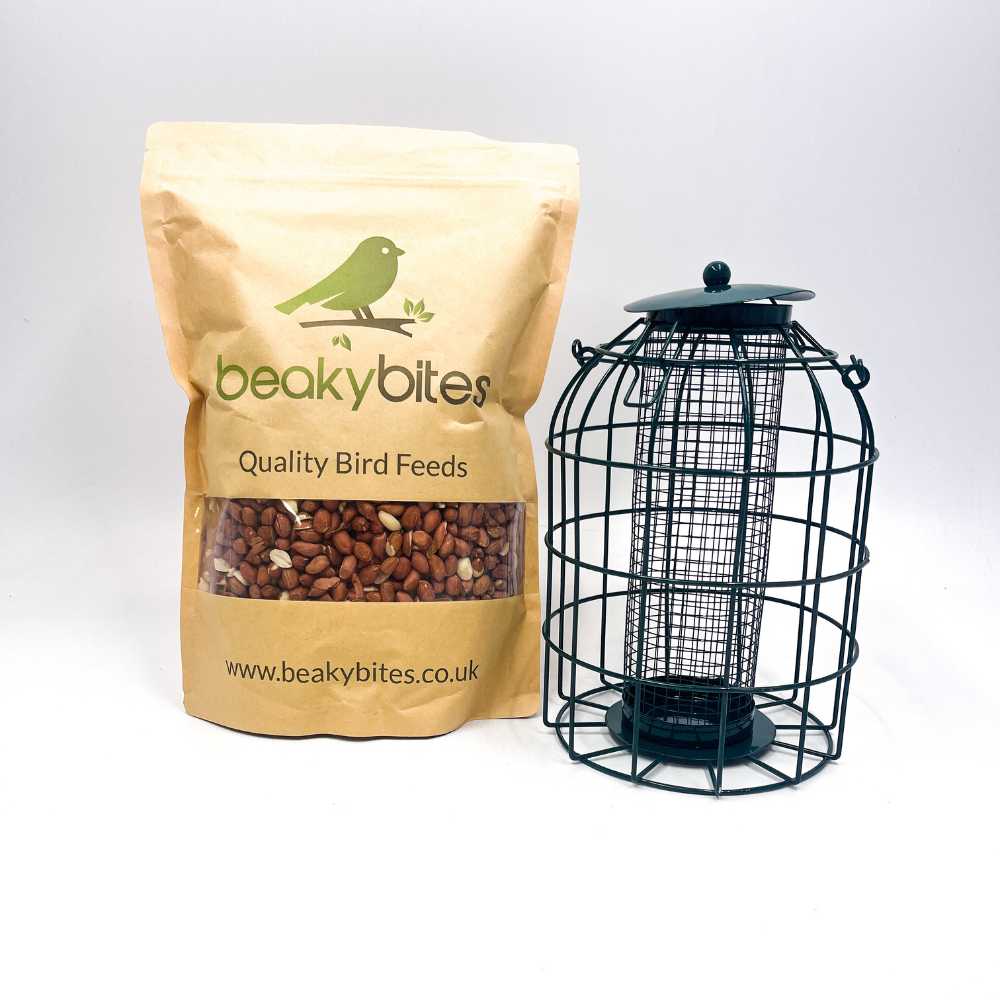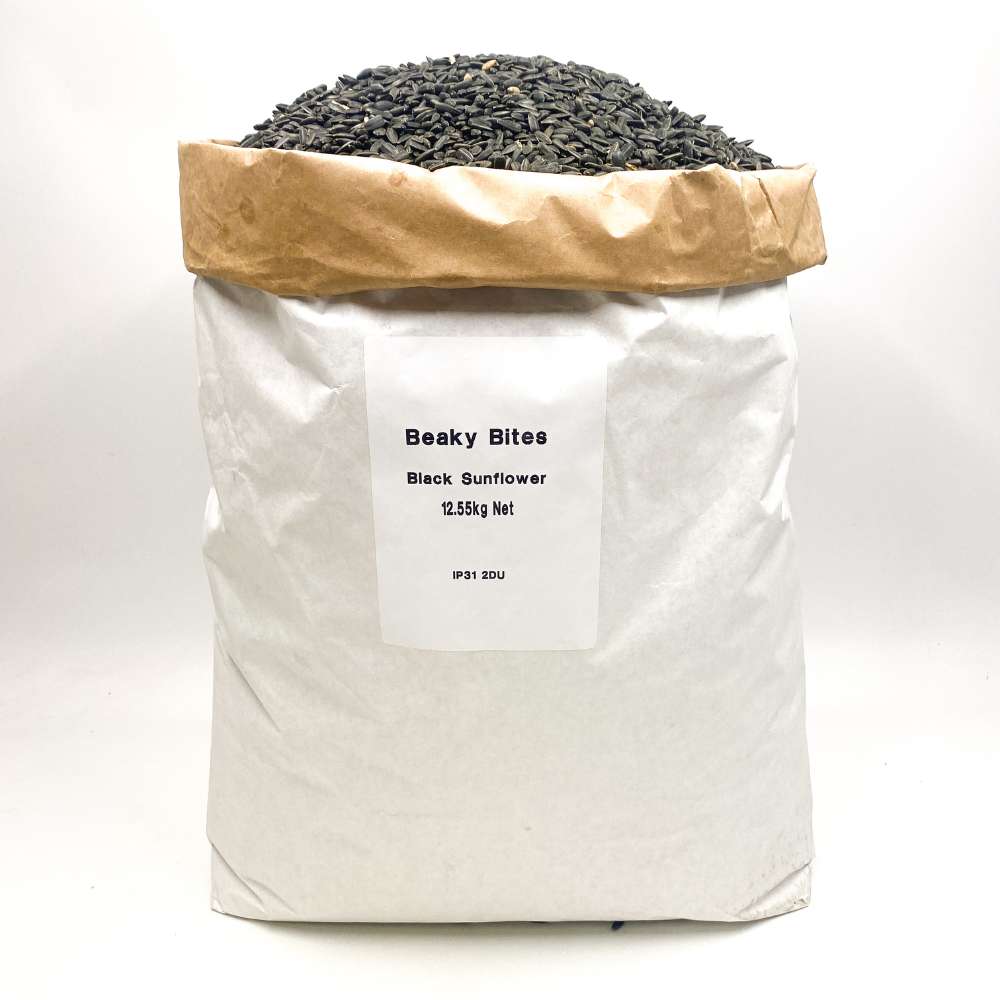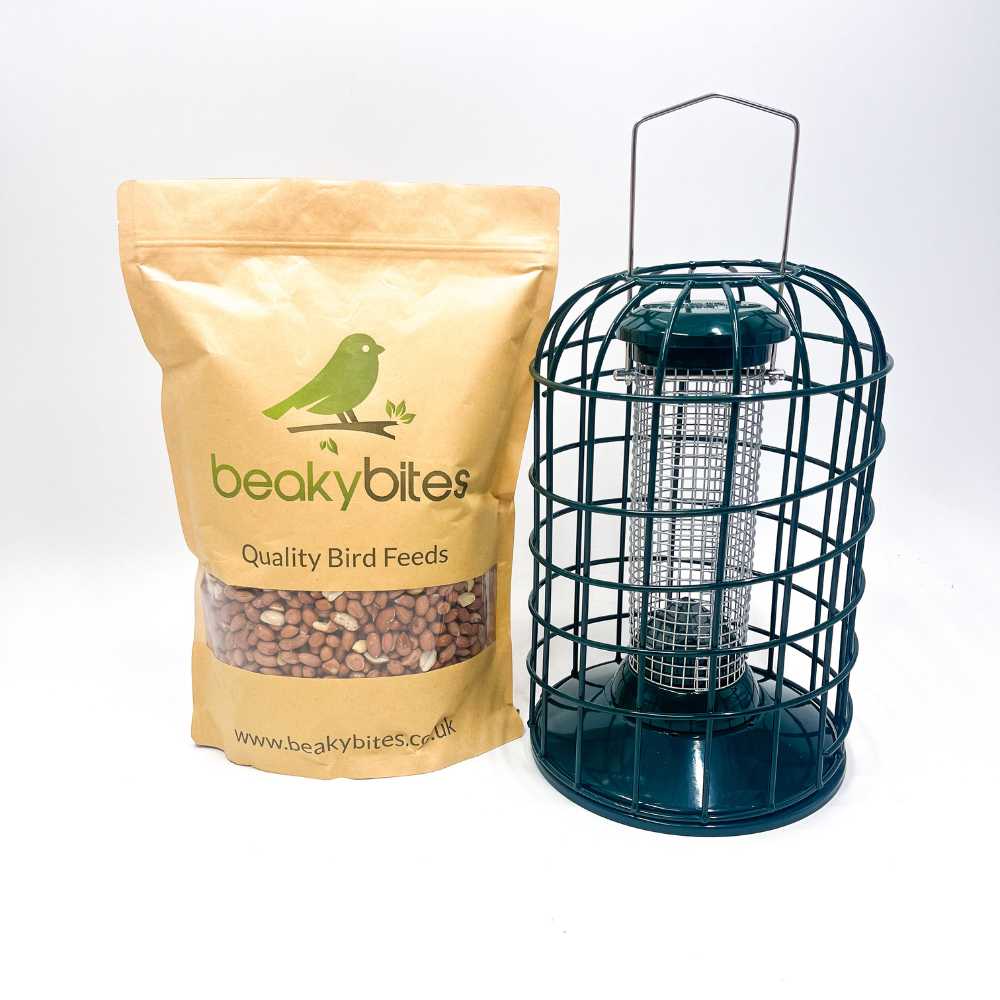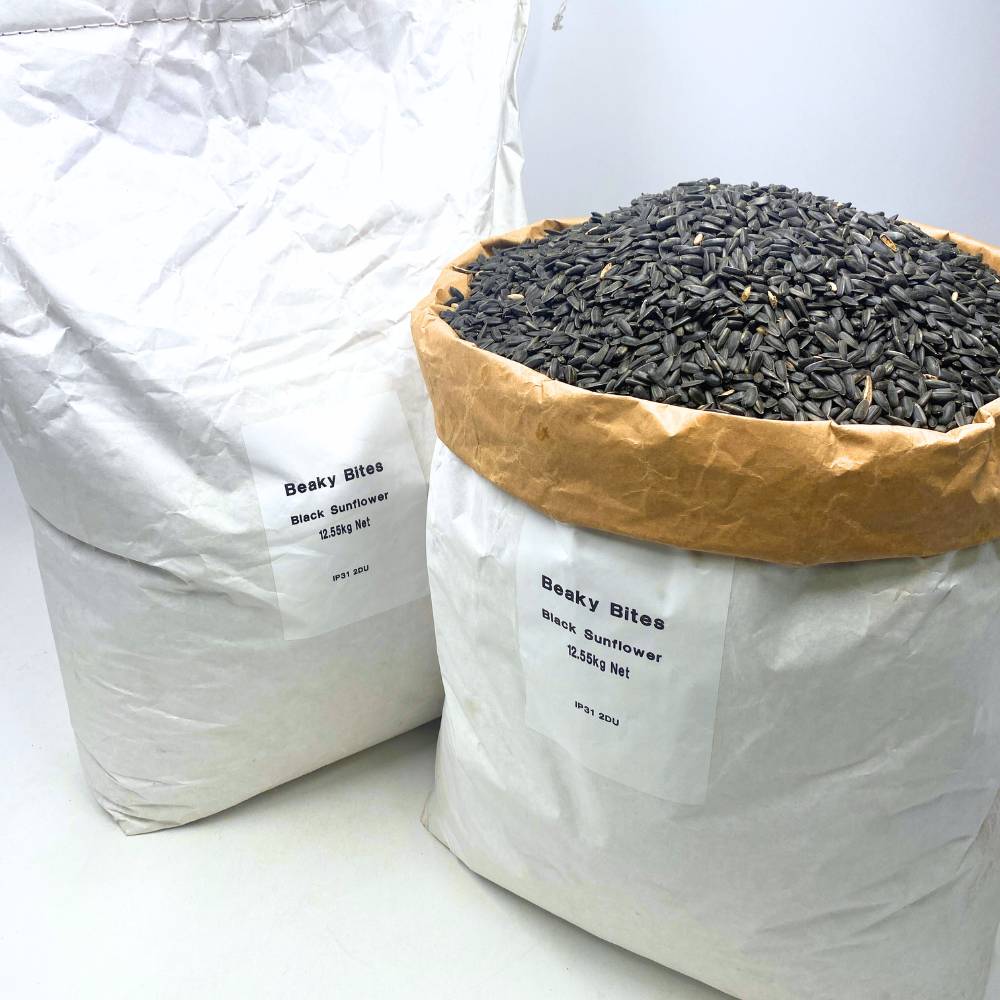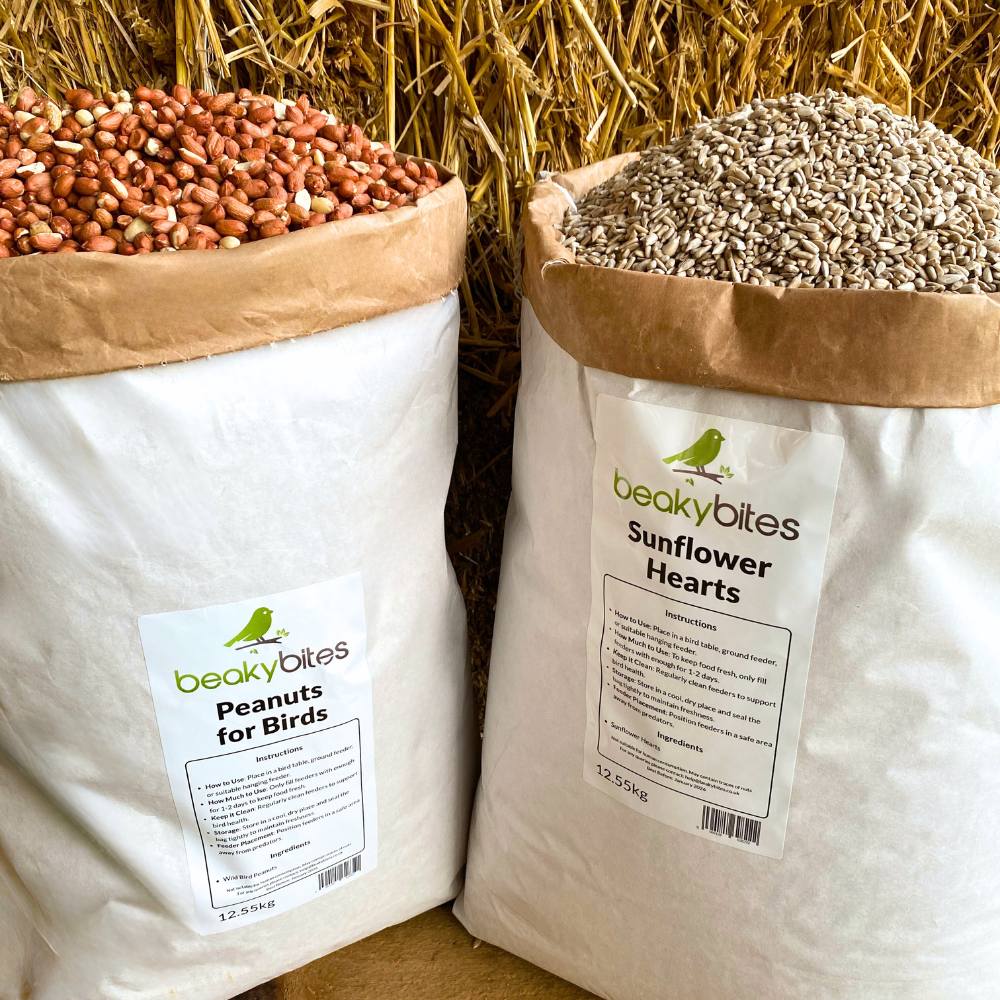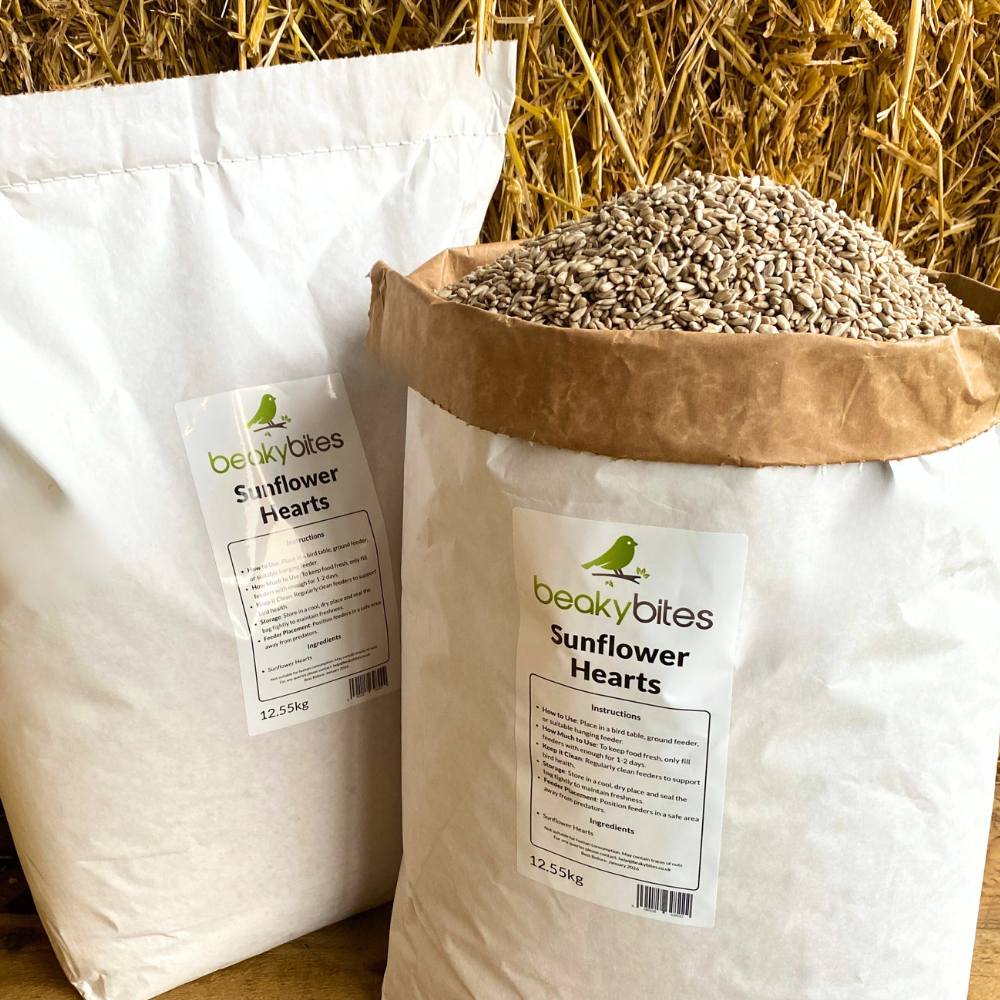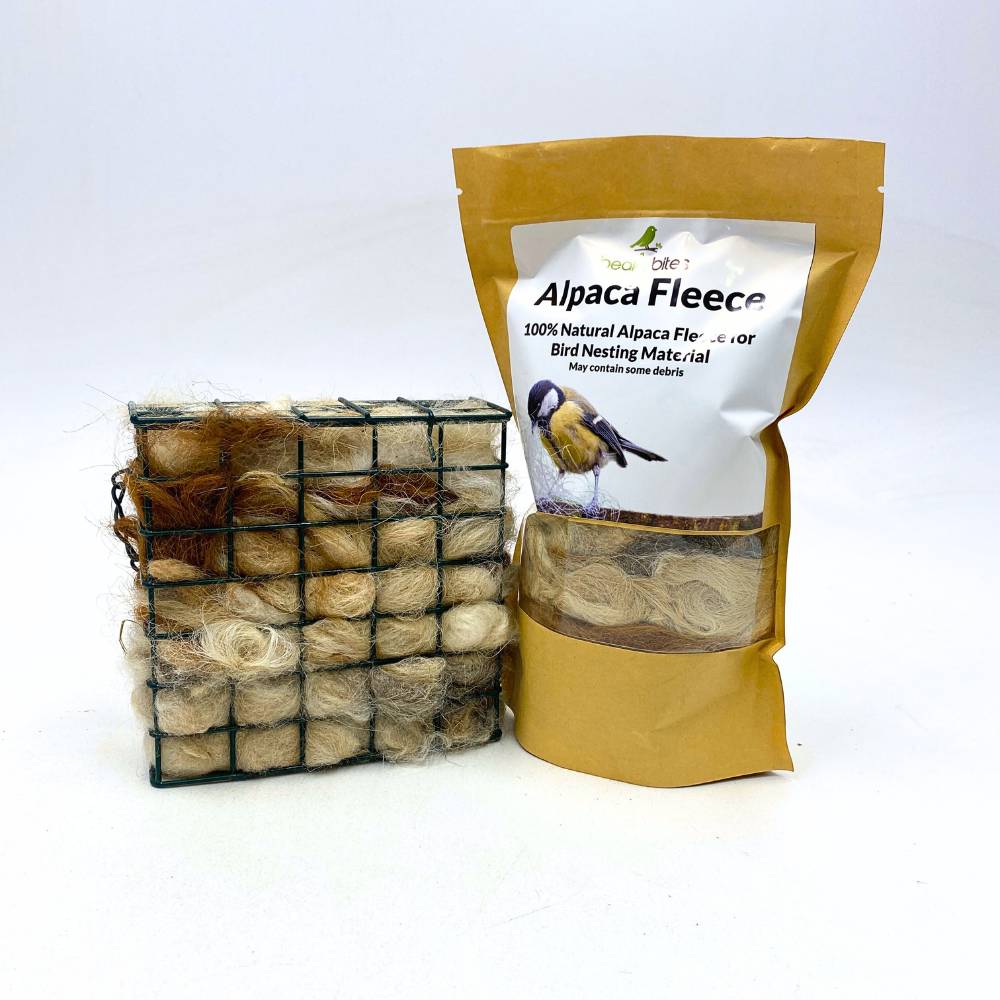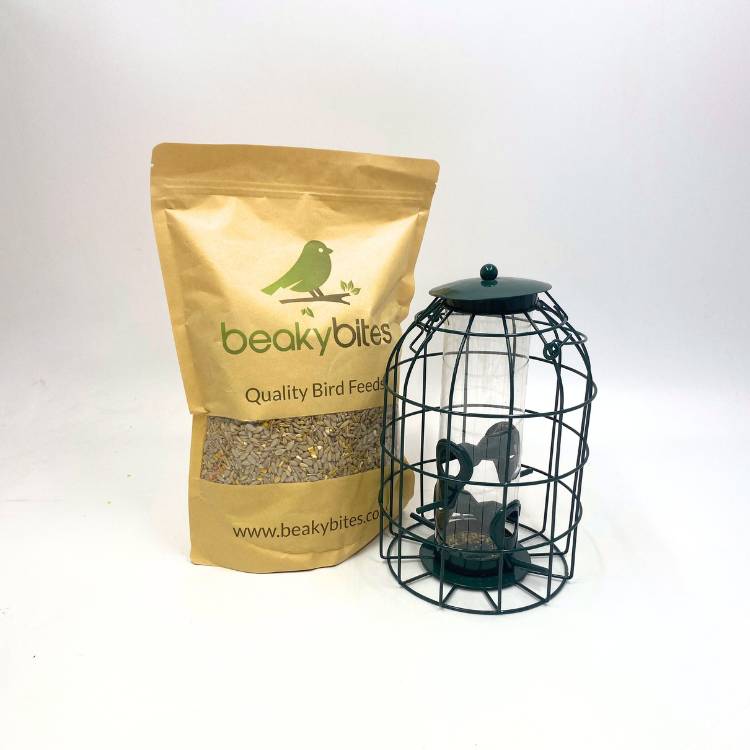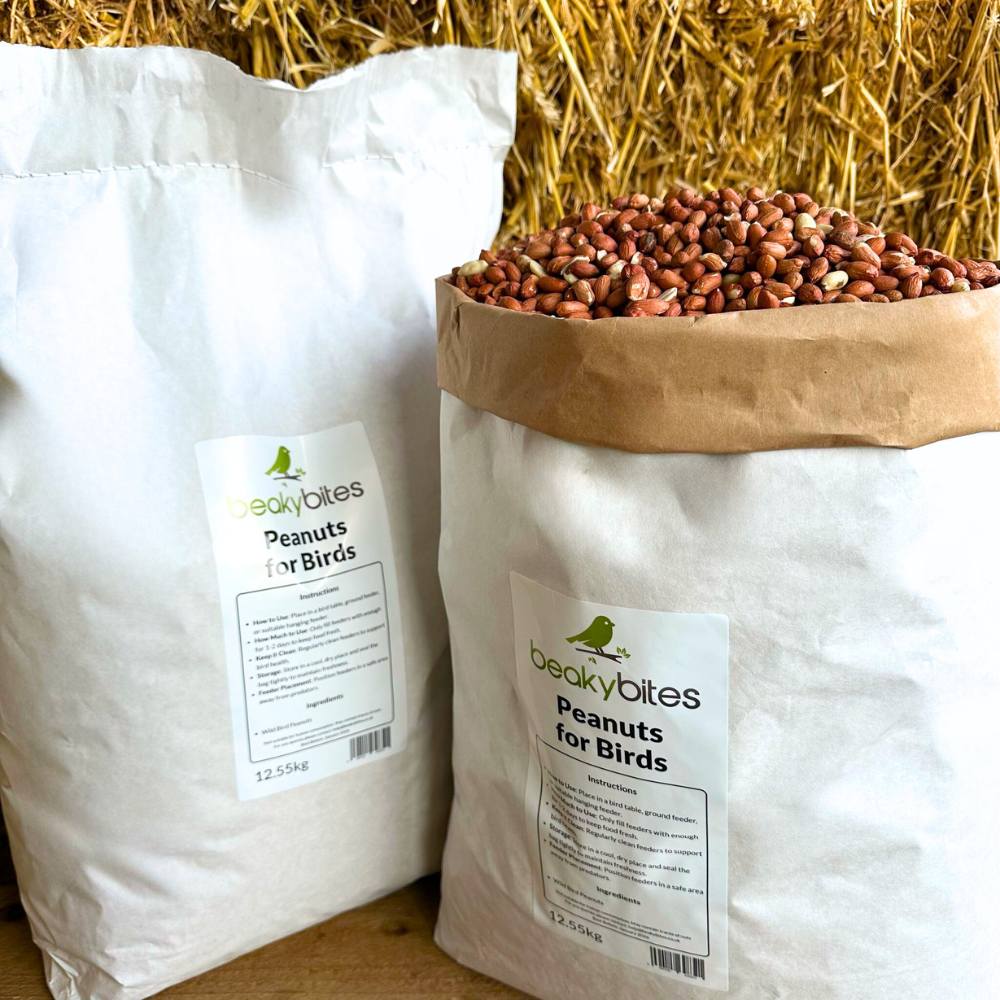Bird Fact File: House Sparrow
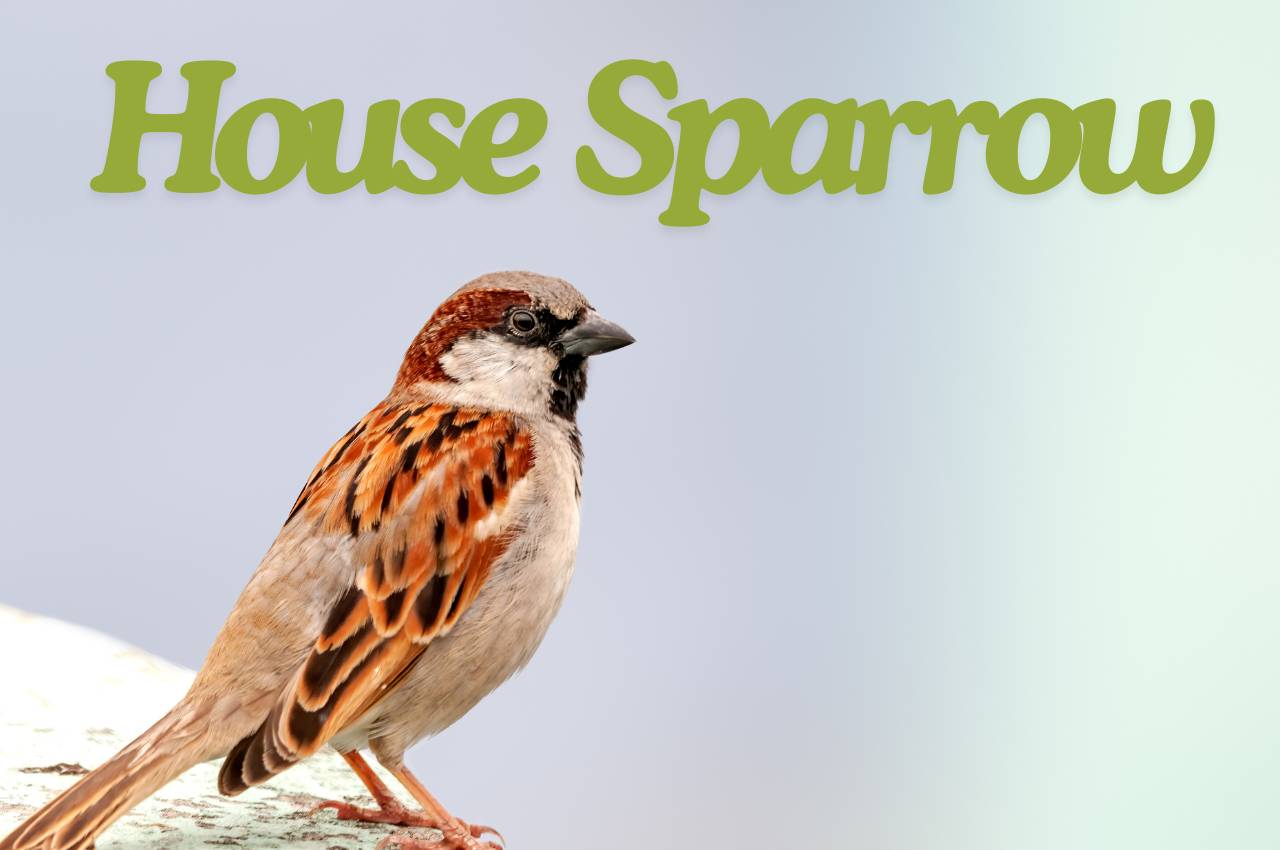
Welcome to our bird guide series brought to you by Beaky Bites! In each post, we'll take a closer look at a beloved UK garden bird to help you better understand and appreciate these amazing birds. From identifying distinct features to discovering their favourite foods and nesting habits, this series aims to provide an overview of our feathered wildlife.
Let's Meet the House Sparrow
House Sparrow Fact File | |
|---|---|
| Size: | 14-15cm, head to tail |
| Wingspan: | 20-25cm |
| Weight: | 24-36g |
| Colours: | Brown, Grey, Black, Cream |
| Eggs: | 4-5 eggs per brood, 3-4 broods a year |
| Nesting: | Tightly packed areas, ivy on buildings, dense hedgerows or eaves of buildings |
| Population Status: | At Risk |
The house sparrow is a little bird with warm brown feathers streaked with black and a grey crown on the male. The underside is pale beige and the short stout beak is perfect for eating seeds and grains. They are often in flocks and sociable and energetic so easy to spot in both urban and rural areas.
You will find house sparrows in gardens, parks, farmland and around towns and cities where they will forage on the ground or gather noisily in hedgerows and trees. Unlike some garden birds house sparrows are confident and curious and will approach feeders and explore human made structures. Scientifically known as Passer domesticus they are part of the Passeridae family and their cheerful chirping is a sound you will hear in gardens all year.
There are around 5 million breeding pairs in the UK and they are still a common sight but their numbers have been declining in recent years. They are lively, live with us and control garden pests so they are a treasure in any outdoor space.
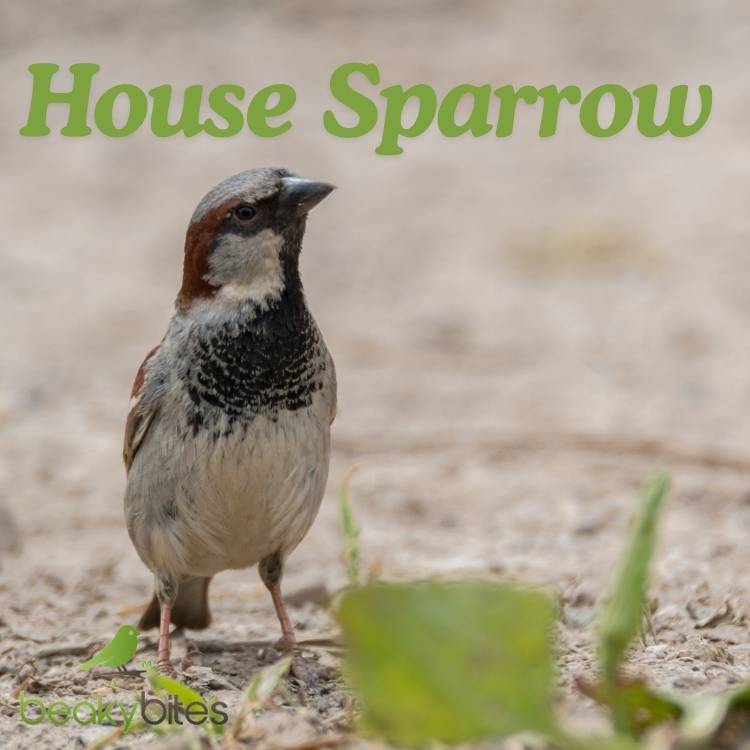
Appearance and Behaviour
House sparrows are small, feisty birds with warm brown feathers streaked with black, pale beige underneath and a stout, conical beak for cracking seeds. Males are easy to spot with their grey crown and black bib, females and juveniles are softer looking with more uniform brown tones and a pale stripe above the eye.
House sparrows have a varied diet that changes with the seasons. In spring and summer they eat insects, spiders and caterpillars which are rich in protein for the growing chicks. In the winter they switch to seeds, grains and scraps and will visit bird tables and feeders for suet, sunflower hearts and other easy food. These clever birds are ground feeders by nature and will forage for dropped food under feeders or in garden beds.
Social and bold, house sparrows will often gather in flocks, chattering loudly as they move between hedgerows, rooftops and feeders. Unlike more solitary birds they thrive in numbers and are a common sight in towns, cities and farmland. Their presence adds life and character to gardens and their pest control and food clearance makes them a valuable garden friend.
House sparrows may not have the bright colours of some garden birds but their charm and chirps are a pleasure to watch. Whether hopping around on the ground or squabbling over a feeder, these versatile birds will bring warmth and energy to any outdoor space.

Where do They Hang Out and Eat?
House sparrows are ground feeders and make do with whatever food is available all year round. In spring and summer they eat insects, spiders and caterpillars, and forage energetically in gardens, hedgerows and fields. You’ll see them hopping across the ground or darting between plants as they search for treats.
As the winter months approach they switch to seeds, grains and scraps to make sure they have enough energy to get through the winter. They’re regular visitors to bird feeders, collecting spilled seed or pecking at suet and crumbs from ground feeding stations. They’re so adaptable they’re one of the most common and hardiest garden birds.
House sparrows love areas with dense hedges, shrubs or trees to nest and roost. Plant native berry producing shrubs like hawthorn or elder and scatter seeds or suet on the ground and they’ll visit your garden. They especially like sunflower hearts, suet pellets and mealworms in the winter.
With their chatty nature and sociable ways house sparrows bring energy and charm to any garden. Whether they’re flitting between hedges or foraging on the ground they’re a joy to watch all year round.
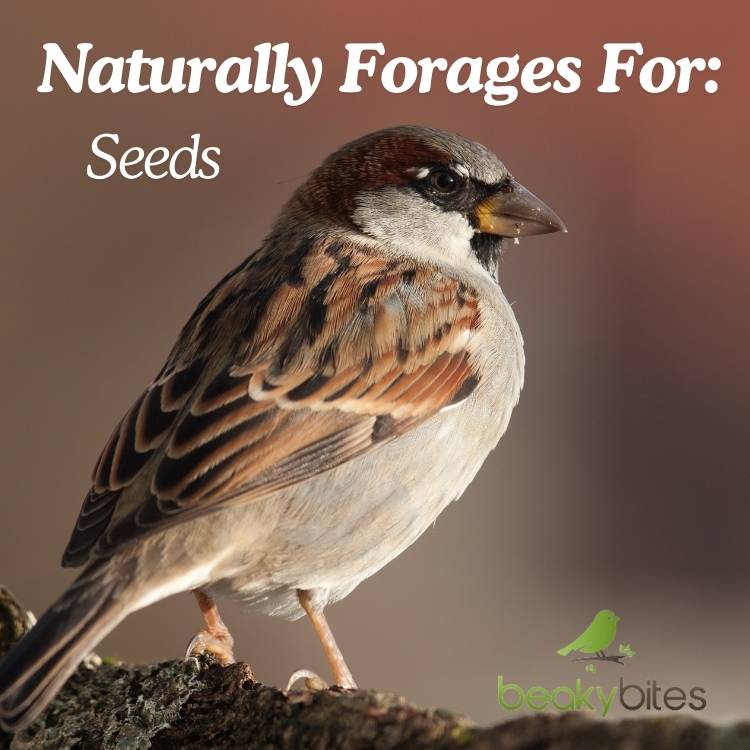
Breeding and Nesting
House sparrows start breeding in early spring and if all goes well can have up to 4 broods in a season. Each brood will have 3-5 white or lightly speckled eggs which the female will incubate for around 11-14 days. Once hatched both parents will work hard to feed the chicks a diet of insects and invertebrates to get them growing fast. The young sparrows will fledge after 14-17 days but will often stay close to their parents as they learn to forage for themselves.
During breeding season house sparrows are social but territorial around their nesting sites and can be seen fluttering between hedges, trees or building eaves. Their cheerful chirping and constant chatter fills gardens, parks and urban spaces with life in spring and summer.
House sparrows like to nest in sheltered spots, dense shrubs, hedgerows or crevices in buildings. They build their nests with grass, twigs and soft materials like feathers or wool to create a warm and safe environment for their young. These adaptable birds can thrive in both rural and urban areas and will make themselves at home wherever there is food and shelter. Their presence and behaviour brings joy and activity to any outdoor space.
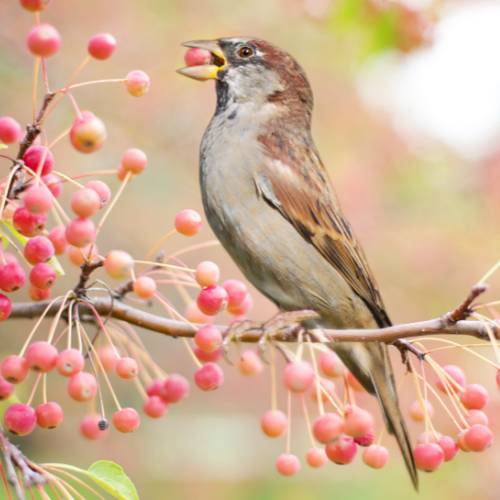
Attracting Them to Your Garden
House sparrows are opportunistic feeders and will eat seeds, grains, insects and berries all year round. To attract these friendly and social birds to your garden, it’s all about the seed. Our All Season Bird Seed Mix is the one, a balanced mix of seeds that will give house sparrows all the nutrition and energy they need all year round.
This all-rounder seed mix is designed to meet the needs of birds all year, from building up strength during breeding season to giving them energy in the cold winter months. Sprinkle on the ground, on bird tables or in feeders to create a feeding area that house sparrows can’t resist.
Unlike single seed options, our All Season Bird Seed Mix offers a mix of textures and nutrients so sparrows get everything they need in one diet. Add natural features like shrubs, hedgerows or berry producing plants in your garden and you’ll have the ultimate sparrows paradise.
House sparrows are social and their chatty calls bring life to any outdoor space. By providing them a reliable and nutritious food source like our All Season Bird Seed Mix you’ll get to enjoy their visits and antics all year round.
Conclusion
House sparrows love gardens with a mix of food – insects, seeds, grains and berries. They also like shrubs, hedges or small trees to roost and nest. These social birds enjoy foraging on the ground and will happily forage in grassy areas or near hedgerows where they can find seeds and insects. Suet blocks, sunflower seeds and mealworms are great to keep them well fed and active.
To attract house sparrows to your garden, scatter food on the ground or use low bird tables that match their feeding habits. Add native shrubs like hawthorn, holly or elderberry and they will provide shelter and extra food in winter. House sparrows are lively and cheerful visitors and their constant chattering and activity will bring life and energy to any garden all year round.
Frequently Asked Questions
What do house sparrows typically eat in the wild?
- Answer: House sparrows eat seeds, grains, berries, and insects depending on the season.
How can I attract house sparrows to my garden?
- Answer: Offer a mix of seeds, suet, and grains, along with shrubs or hedgerows for shelter and nesting.
What type of shrubs or plants do house sparrows prefer for nesting?
- Answer: House sparrows prefer dense shrubs like hawthorn, ivy, or elderberry for nesting and roosting.
How can I support house sparrows during their breeding season?
- Answer: Provide high-protein foods like mealworms and ensure there are safe nesting spaces available.
Do house sparrows use bird feeders, or do they prefer ground feeding?
- Answer: House sparrows use bird feeders but also enjoy feeding on the ground or bird tables.
